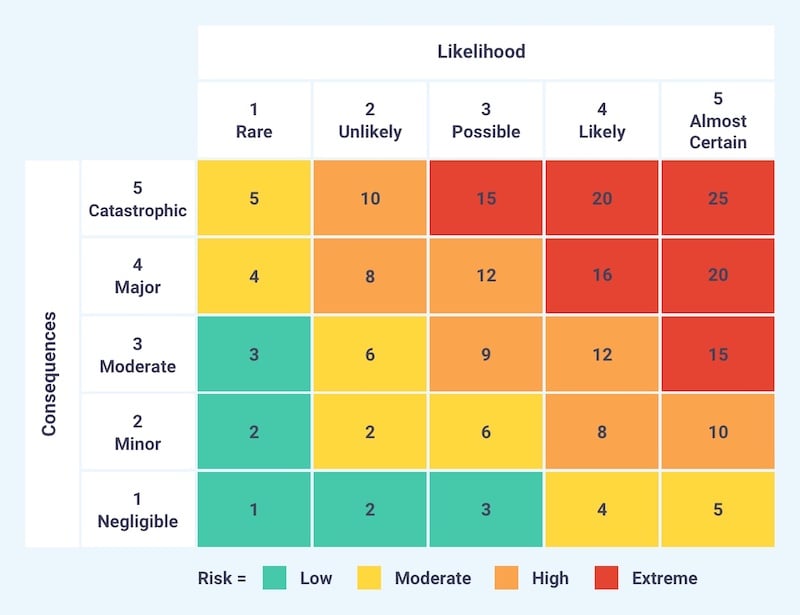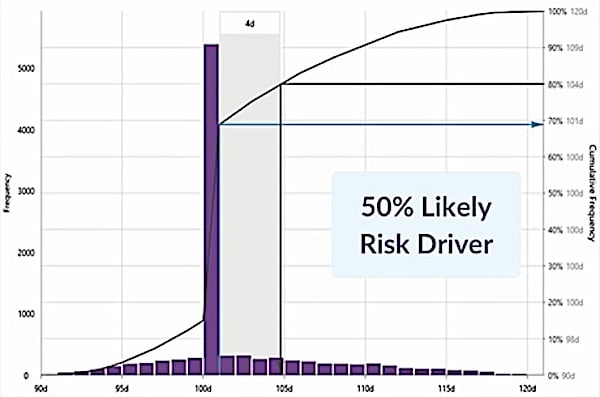Qualitative vs. Quantitative Risk Assessment
Industrial risk assessments can be qualitative or quantitative; discover which RA best suits your facility’s needs and why.
Risk assessment (RA) activity tends to serve two purposes. First, it identifies a possible hazard in the process, followed by subsequent corrective actions to eliminate the hazard. Second, RA helps to comply with regulatory bodies’ regulations, in which the organization is obligated to provide a safe workplace for workers. The regulatory bodies keep the responsibility on the organization to develop and maintain internal resources and carry out all the safety activities.

Figure 1. An RA team on the production line performing a risk assessment.
RA activity consists of activities performed on-site to analyze the process; the RA team collects data and utilizes different models to interpret the collected data into RA estimations. These models are an essential part of RA activity, and their correct selection is crucial to the RA's success. Moreover, the format of these models is accepted by many regulatory bodies, and their inception in RA activity helps the facility acquire accreditation.
Types of Risk Assessments
Safety professionals use different RA models to evaluate risks and consequences. The two standard models utilized are qualitative RA and quantitative RA. The selection of the RA model depends on the safety professionals performing it, process type, and data availability.
Qualitative Risk Assessment
Qualitative RA describes the risk probability within a range, such as high and low. Rather than a fixed value that indicates risk intensity, this method provides a risk overview. With the qualitative RA, information such as risk type, likelihood, and possible impact can be evaluated. This conclusion then further defines the corrective and preventive actions strategy.
The qualitative RA can be performed for any industry in all fields regardless of their critical nature because this model can execute RAs where not enough data is available. For example, if a RA becomes necessary in the event of an accident, and a concerned expert is not present to evaluate the process for risk.
However, the qualitative RA method is not preferable for industries with critical operations, such as the mining or oil and gas industry.

Figure 2. An example qualitative risk assessment. Image used courtesy of Safran
The qualitative RA gives safety personnel a risk idea and its aftermaths without actual risk and intensity. It outlines the risk severity on the broad area of interest and helps plan preventive actions to eliminate or reduce the risk effect.
Qualitative RA includes all risks at any severity level—high or low value.
In qualitative RA, no software or tool is used for conducting RA. The RA team depends on its expertise and process understanding to identify the risks. For this reason, no training is required in any tool or software.
Quantitative Risk Assessment
The quantitative RA describes the risk in numerical values indicating the intensity of risk associated with the process or application. The quantitative RA method provides an enhanced understanding of risks and their associated factors such as severity and likelihood. This ensures more efficient and effective preventive actions. It also helps to provide detailed insight into the risk, its severity level, and impact.

Figure 3. An example quantitative risk assessment. Image used courtesy of Safran
The quantitative RA requires more information and time to complete than the qualitative RA. Only risks deemed relevant with a high-risk factor are included. This requires the RA team to do an in-depth study and analyze the process thoroughly up to minute detail. The RA team classifies the risk occurrence and its severity depending on real-time data.
Quantitative RA uses different tools such as mathematical models or calculations to calculate the risk. For its success, the input data should be accurate and genuine. This technique filters out unnecessary and irrelevant data contributing toward variable RA output. Using software or mathematical model enables the RA team to accurately perform detailed RAs.
The RA team must be experts in software tools or mathematical models. This is achieved by training the RA team before performing an RA. This ensures the RA activity is accurate and free from any deviation occurring in the results. Otherwise, the proposed preventive and corrective actions will not take part in risk elimination.
Qualitative Risk Assessment Application
Some areas and departments of industries where qualitative RA applies include the following.
- Warehouse
- Maintenance department or workshop
- Production floor
- Packaging section
- Emergency exit areas on production floors
- Chemical laboratories in manufacturing plants
- Environmental RA in hazardous chemical areas
- Utility services area
- Power generation department in an industrial plant
The qualitative RA can be used in all industries irrespective of operation type and application because qualitative RA identifies and categorizes risk based on impact.
Quantitative Risk Assessment Application
The quantitative RA is performed on the whole section of the project or industry, rather than assessing an industry’s single department or section.
Industries where quantitative RA is necessary and plays a vital role in eliminating risks include the following.
- Oil and gas
- Construction
- Mining
- Petroleum
- Large power generation plants
The quantitative RA method is used in the critical operations industry, where a minor risk poses a significant impact on its operations and sections.
Any RA team can conduct a qualitative RA for any industry. These are necessary to comply with OSHA regulations in the U.S. However, it takes a trained RA team to perform a quantitative RA to analyze and eliminate high risks in a facility. Both of these types of RAs are vital to running an industrial facility.






